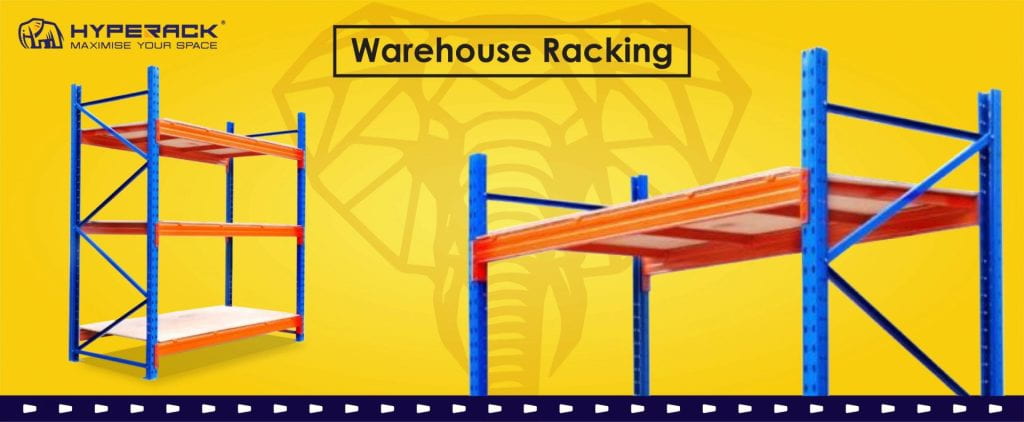
Home
In the ever-evolving world of logistics and supply chain management, warehouse efficiency has become the cornerstone of business success. A critical aspect of warehouse operations is selecting the right racking system to optimize storage, streamline operations, and enhance safety. With so many options available, making the right choice can feel overwhelming. This article explores key considerations, types of racking systems, and practical tips to help you choose the best racking system for your warehouse.
1. Assessing Your Warehouse Needs
The first step in selecting the right racking system is understanding your warehouse’s specific requirements. Every business has unique storage needs, and a one-size-fits-all approach rarely works.
- Warehouse Dimensions: Measure the available floor space, ceiling height, and aisle widths. A proper layout plan ensures efficient use of every inch of your facility.
- Inventory Characteristics: Analyze the size, weight, and turnover rate of your products. Are you storing heavy-duty items, lightweight goods, or a mix of both?
- Operational Flow: Consider the movement of goods within the warehouse. Efficient racking systems should complement your picking, packing, and replenishment processes.
By understanding these factors, you can narrow down the racking systems that fit your operational goals.
2. Exploring Racking System Options
Racking systems come in various configurations, each tailored to specific storage needs. Below is an overview of popular options:
2.1 Selective Pallet Racking
The most widely used system, selective pallet racking, offers direct access to every pallet. It’s versatile and works well for warehouses with diverse inventory.
- Pros: Easy access to all pallets, cost-effective, adjustable for different pallet sizes.
- Cons: Lower storage density compared to high-density systems.
Ideal For: Warehouses with a wide variety of SKUs and frequent stock rotation.
2.2 Drive-In Racking
Drive-in racking is designed for high-density storage, where forklifts enter the rack structure to load and retrieve pallets.
- Pros: Maximizes space by reducing aisle requirements, ideal for bulk storage.
- Cons: Limited selectivity and access to individual pallets.
Ideal For: Cold storage facilities or warehouses storing large quantities of the same product.
2.3 Push-Back Racking
Push-back racking uses inclined rails, allowing pallets to roll forward as items are removed. It combines high density with efficient stock retrieval.
- Pros: High storage density, supports LIFO (Last In, First Out) inventory management.
- Cons: Not suitable for FIFO (First In, First Out) operations.
Ideal For: Warehouses with limited space and medium-turnover inventory.
2.4 Mezzanine Racking
Mezzanine racking takes advantage of vertical space by adding additional floors for storage, offices, or workstations.
- Pros: Increases usable space without expanding the warehouse footprint, customizable for various needs.
- Cons: Higher initial investment, requires proper planning.
Ideal For: Growing businesses needing multi-level storage solutions.
2.5 Cantilever Racking
Cantilever racking is perfect for storing long, bulky items like pipes, timber, and metal sheets.
- Pros: Provides open storage for oversized products, easy to load and unload.
- Cons: Less suitable for small, standardized items.
Ideal For: Heavy industries and construction material storage.
3. Factors to Consider When Choosing a Racking System
After exploring the available options, evaluate them based on the following factors:
- Storage Density: Does the system optimize your available space effectively?
- Accessibility: How easily can workers access inventory? Systems like selective racking offer better accessibility than drive-in systems.
- Scalability: Can the system adapt to future growth or changing inventory needs?
- Durability and Safety: Ensure the racking system is sturdy, complies with safety regulations, and can handle the weight of stored goods.
- Budget: Balance upfront costs with long-term benefits. Some systems may have higher installation costs but offer better ROI through improved efficiency.
4. Integrating Technology with Racking Systems
Modern warehouses are increasingly adopting technology to enhance the performance of racking systems.
- Automated Storage and Retrieval Systems (ASRS): Robotics and automation streamline picking and replenishment processes.
- IoT-Enabled Sensors: Sensors monitor load levels and send alerts for maintenance needs.
- Warehouse Management Systems (WMS): Integrates inventory tracking and racking systems for real-time stock visibility.
Integrating technology not only improves efficiency but also provides valuable data for optimizing operations further.
5. Partnering with a Reliable Provider
Choosing the right provider is as important as selecting the right racking system. Look for providers that offer:
- Expertise: Proven experience in designing and installing racking systems for diverse industries.
- Customization: The ability to tailor solutions to your specific requirements.
- Comprehensive Services: Support ranging from consultation to installation and ongoing maintenance.
A reliable provider can guide you through the selection process, ensuring that your chosen system meets all operational and safety requirements.
Conclusion
Investing in the right racking system is a critical step toward optimizing your warehouse operations. By assessing your needs, exploring available options, and considering key factors like space utilization, safety, and scalability, you can make an informed decision. At Hyperack, we understand the unique needs of every warehouse and provide customized solutions to meet those requirements. Contact us today to learn how we can help transform your storage operations.
Follow Us on Social Media
Stay updated with the latest trends and solutions for warehouse racking systems by following us on our social media channels:
- Facebook: https://www.facebook.com/hyperack/
- YouTube: https://www.youtube.com/channel/UCdGZlojT4q3f0j9iIqv4OnQ
- TikTok: https://www.tiktok.com/@hyperackofficial
- Instagram: https://www.instagram.com/hyperack/
- Google Map: https://maps.app.goo.gl/8BKAapohN7bsdZmf8
